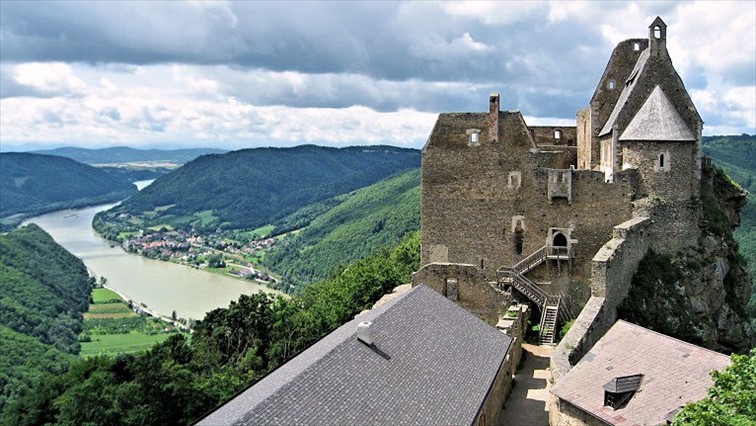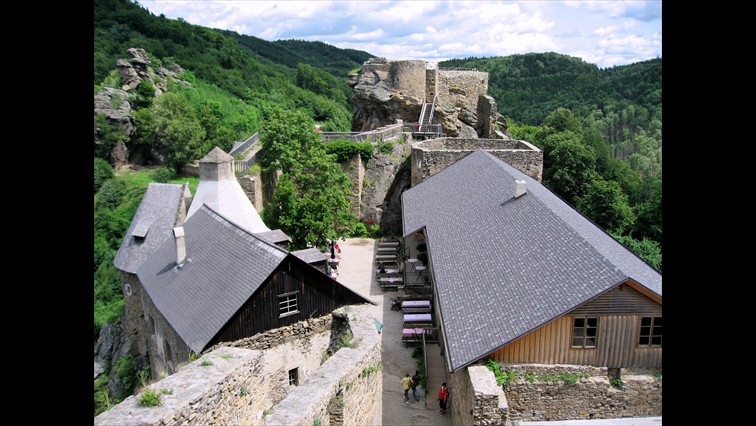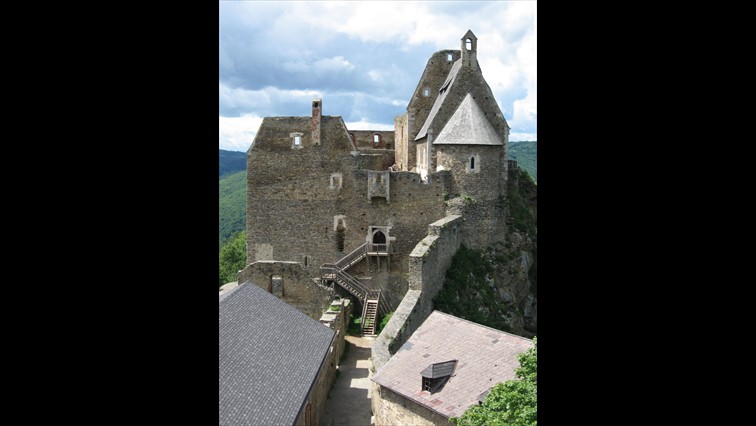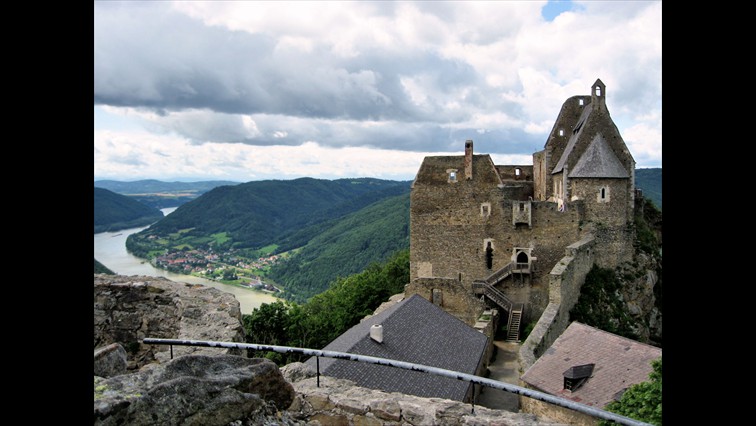The rock spur, 320 m above the Danube, with the two rocky heads "Stein" (stone) and "Bürgel" was the ideal place for a castle in the Middle Ages.
The oldest wall remains of the castle ruins of Aggstein date from around 1200. The castle is first mentioned in a document together with Perchtold von Achstein in 1256.
The Kuenringers - a powerful ministerial dynasty - were enfeoffed with the castle by the Bavarian dukes from 1231 to 1335. In the feud of the ministerials against the Babenberg Duke Friedrich II, Aggstein - like the other Kuenringer estates Dürnstein, Weitra and Zwettl - was conquered and destroyed by Friedrich II.
In 1429 Jörg Scheck von Wald was enfeoffed with the castle Aggstein by Duke Albrecht V (later Emperor Albrecht II). Jörg Schreck rebuilt the castle, but soon fell into the hands of the robber barons and preferred to plunder cargo ships travelling down the Danube. Because of his cruelty he was finally only called "Schreckenwald" (forest of horrors).
Most of what can still be seen of the castle today comes from this era, including the "Rose Garden". There is a legend about this 4m wide and 10m long rock spur. In the course of his reign of terror the unscrupulous Scheck von Wald is said to have exposed his prisoners there. He let them starve or jump into the depths.
In 1606 Anna von Polheim-Parz became the first private owner of the castle and carried out renovations. Afterwards, the castle Aggstein fell into ruin. Stones and beams were used to build the Langegg Monastery. Remains of the former stronghold are still visible in the three-storey Frauenturm and the palace.
In the 19th century, the "romantic" ruins were rediscovered and converted into a tourist attraction. In 2003/2004, extensive revitalisation work was carried out, such as the restoration of the Knights' Hall and the roofing of the chapel.
Entrance to the castle. In front a knight without armour, or rather a pilgrim without backpack.
Impressions of the castle ruin
-

-

-
 to the big yard with the tavern and to the 'Bürgel'
to the big yard with the tavern and to the 'Bürgel' -

-
 To the left in front of it the newly covered Knights' Hall.
To the left in front of it the newly covered Knights' Hall. -
 and the Danube
and the Danube
This is what it looks like in the Knight's Hall when the tables are set for a wedding.
The castle chapel with its late Gothic details dates from the early 15th century, but dates back to a predecessor chapel of almost the same size.
The round-arched apse still has an intact brick ribbed vault and a pointed arch window. Only the traces of eruption on the walls of the two-bay vault in the nave are still visible.
The castle chapel is popular for weddings.
View of the Danube downstream.
From the signal chamber on the 2nd floor of the residential tower you have a magnificent view of the Danube. (Upstream in the picture). From here one could allegedly communicate with the neighbouring castles - e.g. Schönbühel Castle - via signals.
